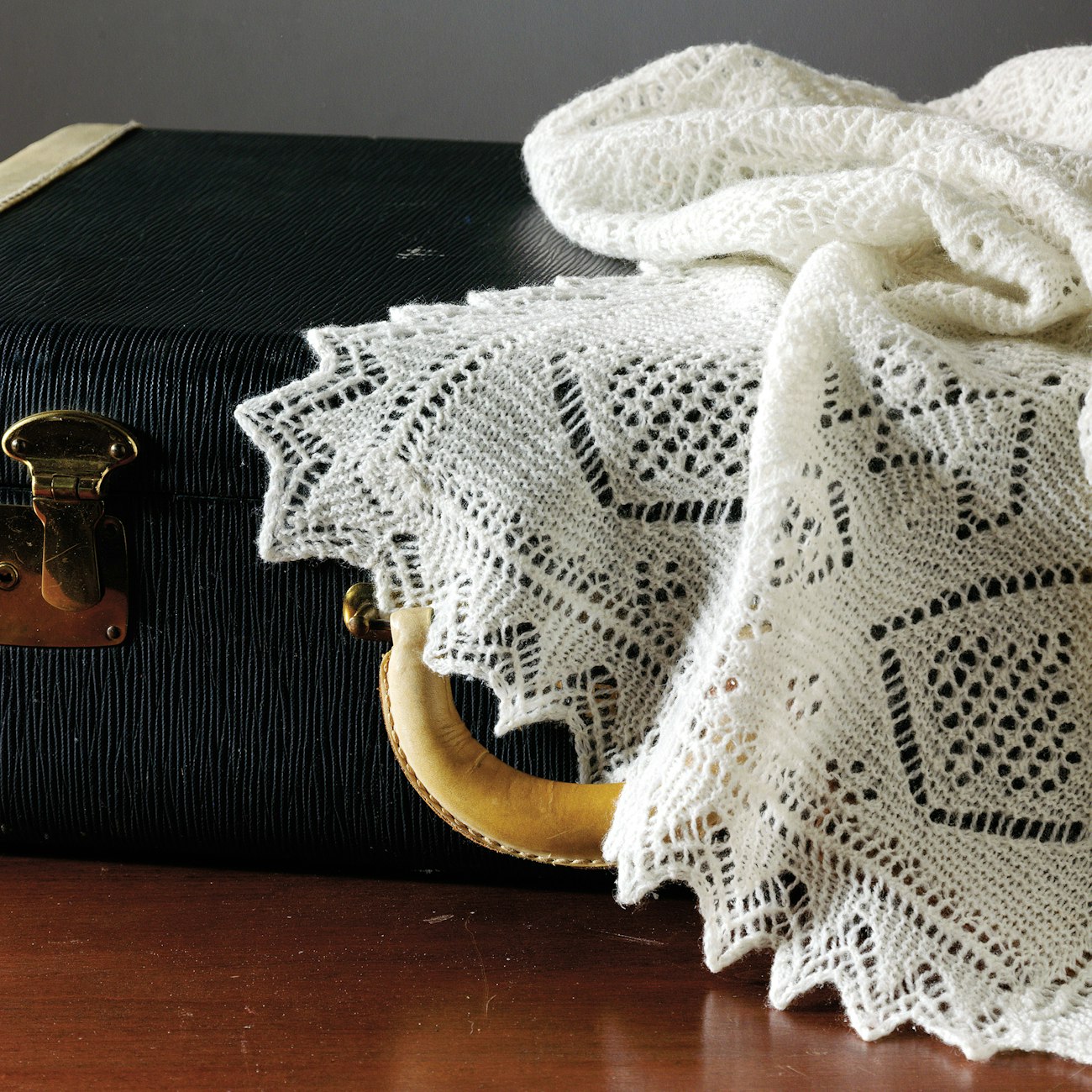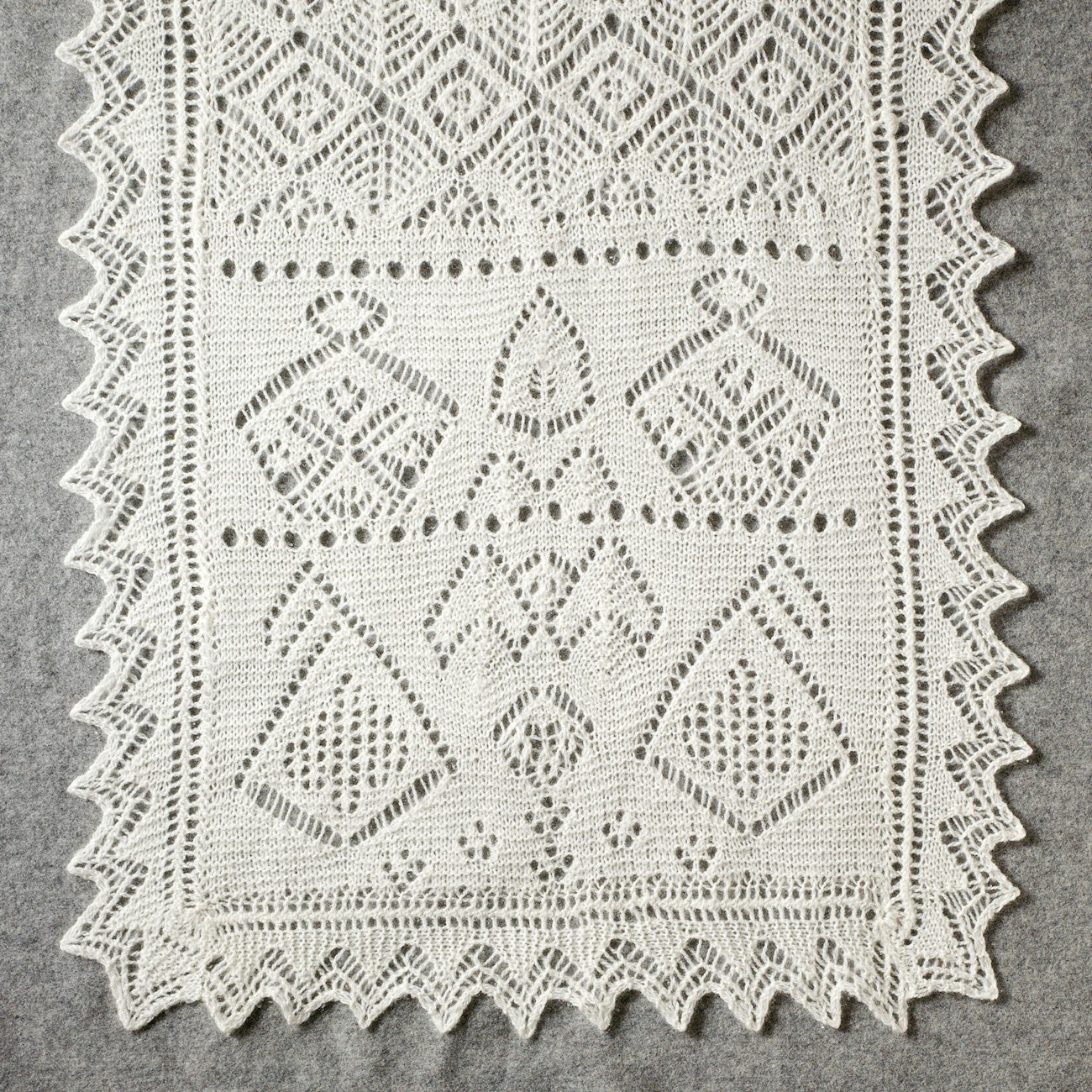Hazel Carter (1928–2016) was not only a professor emerita at the University of Wisconsin in the African Languages and Literature department, she was also a master Shetland lace knitter and contributor to PieceWork. Her “Essy Pattle: A Shetland Cinderella Stole to Knit” was featured in the November/December 2012 issue of PieceWork.
Here’s Hazel with the story behind her Shetland stole:
Shetland’s Cinderella
Essy Pattle is the name of the Shetland Cinderella. It is based on the Charles Perrault story but with adaptations. There is, for example, no ball, the fairy godmother’s place is taken by the “blue yowe,” a gray-blue ewe that Essy in her childhood petted and fed as a lamb, and “da craa” (the crow) that she fed at the window. Her father was a fisherman who married a widow with two daughters after Essy’s mother died.

Hazel used Shetland motifs to represent different parts of the story.
The Motifs
The group of five-petaled blossoms at the beginning of the border in the stole represents a regional flower, Shetland Mouse-Ear, alternatively called Edmonston’s Chickweed and, for good measure, Edmonston’s Mouse-Eared Chickweed, which may have brought comfort to Essy as she sat weeping by the seashore. The Paisley Pinecone, or Teardrop, stands for her unhappiness at this time, and the mesh filling for her father’s fishing nets. Between the two Teardrops are the ewe and, flying over her, the crow. The Horseshoe pattern indicates the mode of transport that the king and his son used to arrive in Essy’s area in search of a bride for the prince. Patterns representing beads, fans, and mirrors show some of Essy’s new life as a royal princess.

The motifs in Hazel Carter’s Essy Pattle Stole; the other half of the stole is a mirror image.
The Design
This design is dedicated to the memory of my great-great-grandfather, Archibald Gibson, a Paisley weaver (note the appearance of the Paisley Pinecone in the pattern). He eventually joined the Royal Navy and in 1805 served in the battle of Trafalgar on H.M.S. Belleisle. Our connection to Shetland: His daughter Christina married Samuel Neil, a noted Shakespearean scholar and educator (my great-grandfather). One of their daughters married the minister of Sullom Church, in Mainland, Shetland. After his wife’s death, Samuel went to live with them, and, when he died, was buried in Sullom churchyard. His imposing gravestone lists some of his achievements.
To learn more about Hazel Carter’s amazing life plus knit her “Essy Pattle: A Shetland Cinderella Stole to Knit,” download the November/December 2012 issue of PieceWork.
Also, remember that if you are an active subscriber to PieceWork magazine, you have unlimited access to previous issues, including November/December 2012. See our help center for the step-by-step process on how to access them.
Originally published October 25, 2021; updated September 8, 2025.

